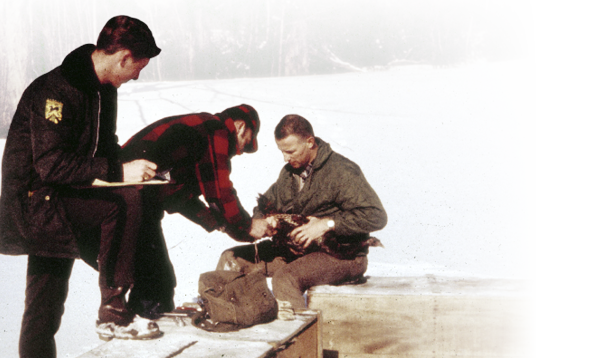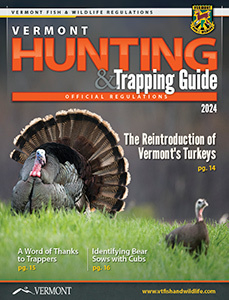The Reintroduction of Vermont's Turkeys

Vermont Fish & Wildlife trap-netted 31 wild turkeys in south-western New York and released them near Pawlet and Castleton in 1969 and 1970.
Vermont is a turkey hunting destination in the Northeast. Hunter success rates are consistently high, and one can chase big woods toms in the spring and field birds in the fall. But did you know that turkey hunting Vermont today is the result of an incredible wildlife restoration effort?
Just over fifty years ago Vermont did not have wild turkeys. Although the species is native to the Northeast, loss of habitat eliminated turkeys from our state due to extensive clearing of Vermont’s forests through the 19th century. With the regeneration of our forests and the rise of science-based wildlife management in the 1950s and 1960s, department biologists and partners started restoring wild turkeys. Beginning in 1969, wild turkeys from New York were captured and translocated into southwestern Vermont by a department biologist. Notes and photos kept by department staff in journals documented the fieldwork:
“Feb 28, 1969. Bill met me in West Pawlet with two gobblers he had cannon netted the day before, so those were the first two birds we released that afternoon around 2 o’clock. And then on March 4, I went back down there again and met Bill, and we put out five turkey hens in the same location.”
From those first translocated birds, Vermont’s turkey population took off fast – fitting for a bird that can put on some serious speed on foot, as any turkey hunter knows. By 1973, turkeys had established a population strong enough to sustain a regulated hunt. That first year 579 permits were allocated, and 23 hunters succeeded in bagging a longbeard. In 2023, turkey hunters celebrated the 50th anniversary of that very first hunt.
Looking ahead to the next 50 years of turkey hunting in our state, there is plenty to be excited about. Working with the National Wild Turkey Federation, our biologists are improving turkey habitat on public and private lands. And thanks to our hunting community’s strong ethos of mentorship, turkey hunting is gaining in popularity. For the past several years, youth and adult novice turkey hunters have enjoyed success during a special hunt the weekend before the spring season. Wild game cooking and learn to hunt seminars for aspiring turkey hunters are among the department’s most popular events.
This is quite a legacy for those first birds and the biologists who released them five decades ago.

The original 31 birds reproduced quickly, enabling Vermont Fish & Wildlife personnel to trap-net and move their progeny eastward and northward in Vermont.

